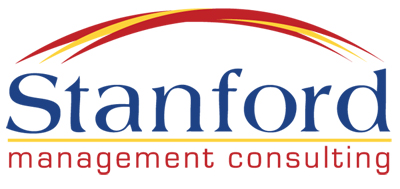“Julia, you are always saying WHY, WHY, WHY, WHY, WHY! What is so important about why?”
Developing the Solution
The solution devised and implemented must meet the following criteria:
- The problem must not recur
- The solution cannot have additional negative effects
- The solution must be appropriately implemented
- The resources required to implement the solution must be kept to a minimum.
Two simple techniques for developing solutions are TPN and Brainstorming.
TPN analysis
TPN Analysis is the process of deciding whether or not you have Total, Partial, or No control over a situation. It can be done every time a problem arises or as you are weeding through a list of problems.
This technique allows you to decide which problems you can actually do something about. The focus is therefore on the span of control and there is a need for realism to be applied. The methodology for TPN analysis is straightforward:
- Determine your problems
- For each problem, decide whether your span of control over it is
T – Total
P- Partial
N – None
This forces you to look only at the problems where you can have an impact. Once you have determined which problems you can control, a good technique for coming up with solutions is Brainstorming.
Brainstorming
Rules for Brainstorming
- Have a strict rotation to involve everyone
- Allow people to pass their turn
- No discussion
- No criticism
- No evaluation/editing of ideas
- Capture everything in a visible format
- Number the ideas as they emerge
- Go into a free flow mode towards the end
Brainstorming is the process of gathering a group of trusted advisors to help you identify the root cause of a problem and throw out ideas for solutions. A trusted advisor could friends, family, other business owners, really anyone whom you trust.
During your brainstorming session you will:
- Create a list of problems
- Identify theories of why the problem exists
- Identify the root cause
- Share ideas
- Define solutions
Brainstorming gives you an opportunity to get different views and opinions from those who are not as closely related to the problem. If done properly, it can spark creativity and provide options that you may never have thought of.
At the end of your brainstorming session, you should have a list of possible solutions. Your next step is to pick the best solution, implement it, and monitor for effectiveness.
Implementing the solution
Once the solution has been identified, the implementation must be planned. Metrics to determine the extent of the success or failure of the solution need to be set.
- A suitable measurement system needs to be set up
- Analysis of the metrics needs to be established in advance
- If the metrics show a failure then action needs to be taken to realign the effort
This process can be managed through the Plan, Do, Check, & Act cycle (PDCA).
- Plan – Plan the implementation and define the metrics
- Do – Start the implementation process
- Check – Check the implementation results against target
- Act – If the implementation results are off target then act so as to realign the effort.
The PDCA cycle can be used as tool to bring discipline into the implementation and make sure that the results obtained are compared with those expected and any deviation leads to a re-evaluation. The goal is for continuous improvement as shown by achieving the expected results.
Why We Sometimes Can’t Fix the Root Cause
Poor Problem Solving Skills
- Due to lack of training
- Capability of the personnel involved even after training
- No emphasis put on problem solving as a critical business skill in the organization
Lack of Focus
- Insufficient focus on the problem at hand leading to non-completion
- Too many problems being tackled at once
- Activity centered on problems that affect non-critical business areas, thereby devaluing the problem solving activity
Lack of Resources
- Information not available or accessible
- No personnel released to work on problem solving teams
- Little or no co-operation
- No support from senior levels
Non-implementable solutions
Solutions are not implementable due to
- Resistance to change
- Cost
- Political issues
- Capability of personnel
- Time requirements
- Wrong solutions generated
Understanding where or why we are making excuses is the first step to solving most of our problems! Once we move past the excuses we can get to the root cause of the problems and use the tools we have to find solutions!
